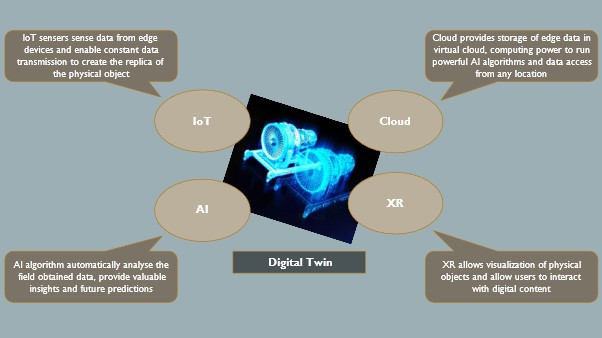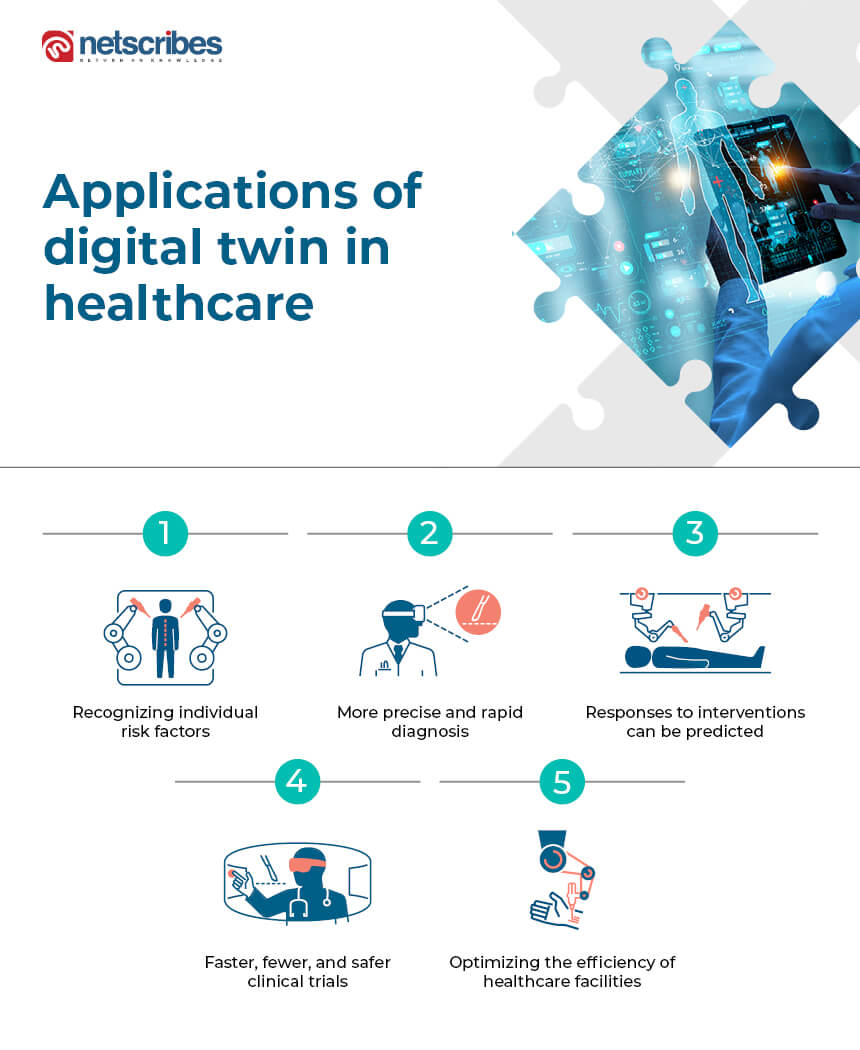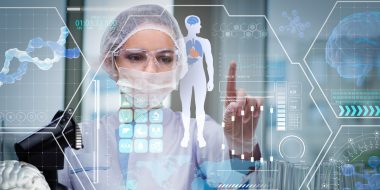Can you guess the percentage of patients who do not get effective treatment? According to the US Food and Drug Administration (FDA), medication ineffectiveness ranges from 38 to 75% for a variety of illnesses ranging from depression to osteoporosis. The primary cause is each individual’s genetic makeup. It is so diverse, and their interaction so unique, that medicines designed for the “ideal patient” may not be appropriate for the “actual patient.”
To solve this, healthcare organizations are taking a renewed interest in personalized medicine – the principle of patient-centric healthcare wherein the treatments, from diagnostics through medication regimens are precisely tailored to the patient’s physiology. To aid in this transformation, researchers are interested in developing digital twins that could integrate known human physiology and immunology with an individual patient’s clinical data in real-time, then produce predictions of what would happen during various medical events.
In this article, we will look to uncover how digital twin technology is helping in the rapid adoption and success of personalized medicine and shaping the future of healthcare.
What is a digital twin?
A digital twin is a virtual clone of a tangible entity (such as a vehicle engine or a person) or an intangible system (such as manufacturing processes or marketing systems) that can be studied independently of its real-world counterpart to make informed judgments.
Consider a virtual representation of a single person where every known medicine for that person’s illness can be tested. This will allow the best treatment to be determined. It can even monitor the virtual “person” and notify you if a medical condition develops as a side-effect enabling preventive actions. As a result, the digital twin has numerous applications across multiple therapeutic areas (TAs) in healthcare. Gartner predicts that by 2021, approximately half of major corporations will use digital twins, increasing their internal efficiency by ~10%.
When it comes to the creation of a digital twin, four technologies are used to produce visual representations, acquire, store, and analyze data, and deliver important insights. These technologies include the Internet of Things (IoT), Extended Reality (XR), Cloud, and Artificial Intelligence (AI).
The four kinds of technologies used for creating a digital twin

Source: eInfochips
Benefits of using digital twins in healthcare
The use of digital twins in healthcare technology provides major advantages such as remote visibility of patients, their internal organ systems, and processes, as well as knowing the behavior of physical devices that are being used on them. It uses insights derived from patient behavior to run a prediction algorithm in order to forecast the future.
A patient’s digital twin ultimately permits data collection at the finest granularity of individual cells interacting in the body’s numerous organs. This digital twin, in conjunction with the genetic data, clinical longitudinal data, and wellness data, can produce a unique data model for every individual.
The Patient’s Digital Twin is intended to collect continuous data from the individual on various vitals, medical state, response to drug, therapy, and surrounding environment. Data regarding the diseases and symptoms are kept in the public cloud via Azure or AWS and sent into the Digital Twin platform. Such historical and real-time data assists the ML system in predicting future health conditions.
For instance, for a chronic diabetes patient’s lifestyle, daily food habits, and blood sugar data, the model notifies the patient about prescriptions, dietary habit modifications, medical consultations, and so on. As a result, digital twins in healthcare makes use of a significant amount of rich data from multiple IoMT devices and AI-powered models to generate more tailored and better care plans.
Using insights from previous data, each patient’s unique Digital Twin assists in selecting the best therapy, predicting the result of a certain surgery, and managing their chronic disease. Consider the case of a heart failure patient who requires Cardiac Resynchronization Therapy (CRT) through the implantation of a pacemaker. Few people do not respond to the therapy because of abnormalities in their hearts.
Moreover, for the appropriate patients, placement must be exact to avoid future complications. The digital twin of the patient heart is built by leveraging patients’ MRI, ECG, and Blood Pressure data, and it assists cardiologists in defining the position of leads and digitally experimenting with the placement before intervention surgery.

Digital twins of human organs: Taking personalization to the next level
Several companies have created digital twin representations of human organs. For instance, Hewlett Packard Enterprise collaborated with Ecole Polytechnique Fédérale de Lausannes (EPFL) on the Blue Brain Project, using its supercomputer to develop digital models of the brain for scientific purposes. Siemens Healthineers offers a Digital Twin model, and Philips offers their own virtual heart.
A.I. aids in the building of digital twins in healthcare, which weaves together physiological data from organs to produce a 3D image. The latter can be tailored to a specific patient based on their unique attributes. For instance, Siemens Healthineers’ algorithms are trained on a massive database containing over 250 million annotated photos, reports, and operational data. This allows them to create digital heart models based on patient data that have the same parameters as the patient (size, ejection fraction, muscle contraction).
In this manner, the operator can test therapies on the model and observe the results. Eventually, the optimum therapy for this specific patient can be determined. Dorin Comaniciu, Vice President of Artificial Intelligence at Siemens Healthineers, has stated that they’ve utilized this technology to assess cardiovascular risks in projects with hospitals across Europe. Models for additional organs, including the lungs and liver, are also being developed by the company.
What does the future look like?
Personalized medicine now relies significantly on health trackers, which allow us to collect a massive amount of data. There are gadgets available to measure any health parameters from one’s head to toe. The next stage in personalized medicine will be to connect such insights to 3D organ models. Wearable sensors will send real-time data to a distant server that will keep track of your digital twin. Both the patient and their doctor will be notified regularly about certain tests/procedures that must be performed as preventive measures.
However, several factors come into play for such an idea to become a reality. These range from financial resources dictating which healthcare center or patient will be able to afford the technology to the proficiency required to create sensors that individuals may wear without interfering with their everyday routine. The tremendous computer power required to execute models of the human body or even individual organs can also be daunting.
Many large med-tech companies, such as Siemens Healthineers and GE, are working on digital twins. To achieve their goal, these companies will require critical assets including massive amounts of patient data.
Although digital twins have a promising future in health care, the full impact of the technology will be determined by its capacity to integrate knowledge into accurate medical advice at scale. Better data, new interactions between patients and providers, and a regulatory framework to confirm these promises will be required to support this transformation.
Netscribes offers holistic market, consumer, and technology insights for healthcare organizations across varied domains, to help them in seizing market opportunities and outpace the competition. Contact us, to know more.






